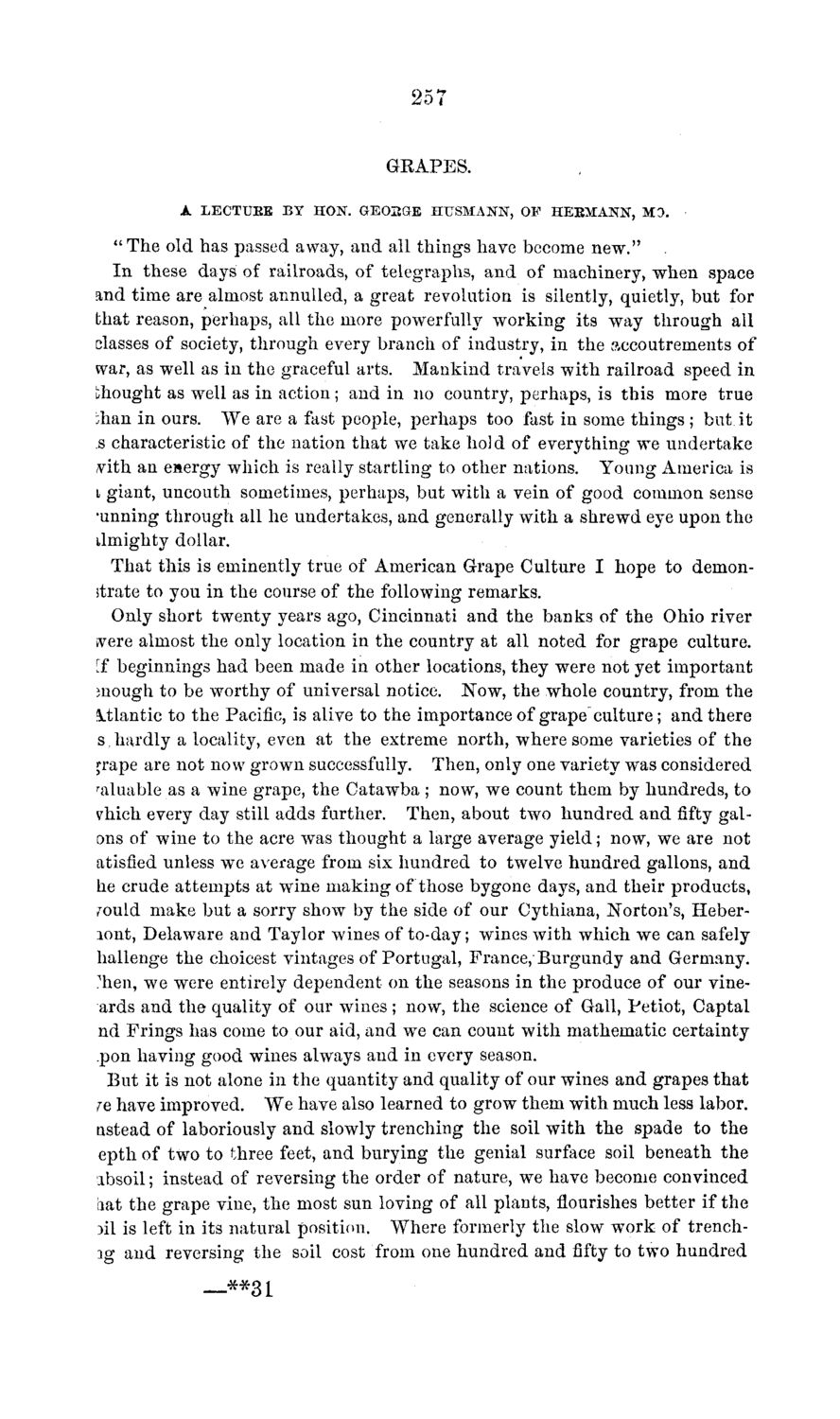| |
| |
Caption: Board of Trustees Minutes - 1869
This is a reduced-resolution page image for fast online browsing.

EXTRACTED TEXT FROM PAGE:
257 GRAPES. A. L E C T U K E BY HON. GEOISGE HUSMANN, OP H E K M A N N , MO. " T h e old has passed away, and all things have become new." I n these days of railroads, of telegraphs, and of machinery, when space and time are almost annulled, a great revolution is silently, quietly, but for that reason, perhaps, all the more powerfully working its way through ail classes of society, through every branch of industry, in the accoutrements of war, as well as in the graceful arts. Mankind travels with railroad speed in thought as well as in action; and in no country, perhaps, is this more true :han in ours. We are a fast people, perhaps too fast in some things ; but it s characteristic of the nation that we take hold of everything we undertake vith an energy which is really startling to other nations. Young America is i giant, uncouth sometimes, perhaps, but with a vein of good common sense •unning through all he undertakes, and generally with a shrewd eye upon the ilmighty dollar. That this is eminently true of American Grape Culture I hope to demonstrate to you in the course of the following remarks. Only short twenty years ago, Cincinnati and the banks of the Ohio river were almost the only location in the country at all noted for grape culture, [f beginnings had been made in other locations, they were not yet important mough to be worthy of universal notice. Now, the whole country, from the Atlantic to the Pacific, is alive to the importance of grape culture; and there s, hardly a locality, even at the extreme north, where some varieties of the jrape are not now grown successfully. Then, only one variety was considered valuable as a wine grape, the Catawba ; now, we count them by hundreds, to diich every day still adds further. Then, about two hundred and fifty galons of wine to the acre was thought a large average yield; now, we are not atisfied unless we average from six hundred to twelve hundred gallons, and he crude attempts at wTine making of those bygone days, and their products, fould make but a sorry show by the side of our Cythiana, Norton's, Heberlont, Delaware and Taylor wines of to-day; wines with which we can safely hallenge the choicest vintages of Portugal, France, Burgundy and Germany, ^hen, we were entirely dependent on the seasons in the produce of our vineards and the quality of our wines ; now, the science of Gall, Petiot, Captal nd Frings has come to our aid, and wre can count with mathematic certainty pon having good wines always and in every season. But it is not alone in the quantity and quality of our wines and grapes t h a t re have improved. We have also learned to grow them with much less labor. Qstead of laboriously and slowly trenching the soil with the spade to the epth of two to three feet, and burying the genial surface soil beneath the ibsoil; instead of reversing the order of nature, we have become convinced bat the grape vine, the most sun loving of all plants, flourishes better if the 3il is left in its natural position. Where formerly the slow work of trending and reversing the soil cost from one hundred and fifty to two hundred _ **3i
| |